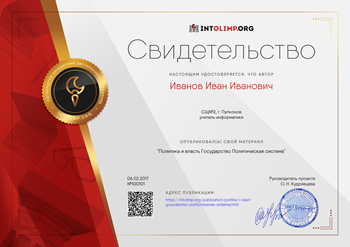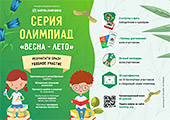
Christmas Traditions in Great Britain

Christmas
Christmas Day , December 25, is probably the most popular holiday in Great Britain. It is a family holiday. Traditionally all relatives and friends get together and give each other presents .

History of Christmas
The history of Christmas dates back to thousand years.
The first recorded date of Christmas being celebrated on December 25th was in 336AD in the time of the Roman Emperor Constantine (he was the first Christian Roman Emperor). A few years later Pope Julius I officially declared that the birth of Jesus would be celebrated on the 25th December.

This date was probably chosen because
the Winter Solstice and the ancient pagan
Roman midwinter festivals called 'Saturnalia'
and 'Dies Natalis Solis Invicti' took
place in December.

St Augustine was the person
who really started Christmas
in the UK by introducing
Christianity in the 6th century.
He came from countries that
used the Roman Calendar, so
western countries celebrate
Christmas on the 25th December.
Then people from Britain and
Western Europe took Christmas on
the 25th December all over the world!

Boxing Day
Boxing Day takes place on December 26th
and is only celebrated in a few countries.
It was started in the UK about 800 years
ago in the Middle Ages. It was the day
when the alms box, collection boxes for
the poor often kept in churches, were
opened so that the contents could be
distributed to poor people. Some churches
still open these boxes on Boxing Day.
Boxing Day has now become another
public holiday in countries such as
the U.K. , Canada, Australia
and New Zealand.

If we are to find the roots of the Christmas traditions,
we may need to go back to the age of Mesopotamian
culture which had the tradition of celebrating New Year.
The same kind of tradition was also the part of
the Persian and Babylonian culture. They had the festival
called the ‘Sacaea’. On the other hand, there was also
a festival in Scandinavia known as ‘Yule’, which was
celebrated during the winter months. All these festivals
have had great impact on the present day Christmas.

Stockings
Christmas - is a holiday for the whole family, but most of all children love it and wait for Christmas.They hang out near the fireplace stockings for gifts.

Christmas Tree
The first Christmas Trees came to Britain
in the 1830s. They became very popular
in 1841, when Prince Albert (Queen
Victoria's German husband) had
a Christmas Tree set up in Windsor
Castle. Ever since then, Christmas Trees
have been a part of a British Christmas.
Because of the danger of fire, in 1895 Ralph Morris,
an American telephonist, invented the first
electric Christmas lights, similar to the ones we use today.

Greenery
Holly, Ivy and other greenery such as Mistletoe
were originally used in pre-Christian times to
help celebrate the Winter Solstice Festival and
ward off evil spirits and celebrate new growth.
The U.K. and Germany were the main countries
to keep the use of the greenery and here
the Christian meanings are :

Holly
Holly became the recognized symbol of Christmas.
According to some versions, from it the wreath of
the Christ was done, and a berry holly have reddened
from blood of the Savior. The prickly leaves represent
the crown of thorns that Jesus wore when he was
crucified. The berries are the drops of blood that
were shed by Jesus because of the thorns.

Ivy
It has to cling to something to support itself as it grows.
This reminds us that
we need to cling to God
for support in our lives.

Mistletoe
The practice of hanging it in the house
goes back to the times of the ancient
Druids.
It is supposed to possess mystical powers which bring good luck to the household and ward off evil spirits.
It was also used as a sign of love and friendship in Norse mythology and that's where the custom of kissing under Mistletoe comes from.

The custom of kissing
under Mistletoe comes
from England! The original custom
was that a berry was picked from
the sprig of Mistletoe before the person
could be kissed and when all the berries
had gone, there could be no more kissing!

Carols
Carols were first sung in Europe thousands of years ago,
but these were not Christmas Carols. They were pagan
songs, sung at the Winter Solstice celebrations as
people danced round stone circles. The Winter Solstice
is the shortest day of the year, usually taking place
around the 22nd December. The word Carol actually
means dance or a song of praise and joy! Carols used
to be written and sung during all four seasons, but
only the tradition of singing them at
Christmas has really survived!

Carols
Christmas carols are special songs which are sung during а Christmas season.
The songs are about Jesus and
the time when he was born.

Jingle bells
Dashing through the snow , In a one-horse open sleigh, O'er the fields we go, Laughing all the way. Bells on bobtail ring, Making spirits bright. What fun it is to ride and sing, A sleighing song tonight. Oh, jingle bells, jingle bells, Jingle all the way, Oh, what fun it is to ride In a one-horse open sleigh. Jingle bells, jingle bells, Jingle all the way, Oh, what fun it is to ride In a one-horse open sleigh.

Christmas is Coming
Christmas is coming, the goose is getting fat
Please put a penny in the old man's hat If you haven't got a penny, a ha' penny will do,
If you haven't got a ha' penny, then God bless you

Candles
One of the main traditions of these weeks are wreaths with candles which have special meaning. Such wreaths are done on the first Sunday of this period, and usually they consist of 5 candles: four red and one white.

Christingle
It actually means 'Christ Light' and celebrates
the light of Jesus coming into the world:
but no one is really sure how the Christingles
came into being.
- The orange is round like the world.
- The candle stands tall and straight and
gives light in the dark like the love of God.
- The red ribbon goes all around the 'world'
and is a symbol of the blood Jesus shed
when he died for us.
- The four sticks point in all directions and
symbolise North, South, East and West –
they also represent the four seasons.
- The fruit and nuts (or sometimes sweets!)
represent the fruits of the earth, nurtured
by the sunshine and the rain.

The Christmas log
Nowadays the Christmas log
should be cut down by the
head of family, instead of being
bought from someone. It should
be burnt down in a fireplace
together with the rest of the last
year's Christmas logs. The log
should be burnt for all twelve
days of Christmas. There is
a superstition, that if the person
sees the shadow rejected from
a fireplace where a log burns,
without a head, he will die in the
following year. It is said that ash
of a Christmas log cures illnesses.

Santa Claus is often connected
with the name of St. Nicholas.
St. Nicholas was a Bishop
who lived in the 4th century AD
in a place called Myra in
Asia Minor (now called Turkey).
He was a very kind man and
had a reputation of a man who helped
the poor and gave secret
gifts to people who needed it.
Because of his kindness
Nicholas was made a Saint.

Santa Claus
Santa Claus, also called Santa, Father Christmas (in Britain), or Kriss Kringle (in America) is an imaginary old man in red clothes and with a long white beard.

Some people say that Santa
lives in the North Pole.
In Finland, they say that he lives in the north part of
their country called Lapland.
But everyone agrees that he travels through
the sky on a sledge that is pulled by reindeer,
that he comes into houses down the
chimney at night and puts
presents for the children in socks,
in front of the family Christmas tree,
or near the fire place.

Presents
One of the main reasons we
have the custom of giving
and receiving presents at
Christmas, is to remind us
of the presents given to
Jesus by the Wise Men:
Frankincense, Gold and Myrrh.
- Frankincense was a perfume used in Jewish
worship and, as a gift, it showed that people
would worship Jesus.
- Gold was associated with Kings and Christians
believe that Jesus is the King of Kings.
- Myrrh was a perfume that was put on dead
bodies to make them smell nice and, as a gift,
it showed that Jesus would suffer and die.

Christmas Cards
People around the world send Christmas Cards to their friends and family.
The first Christmas card was created and sent in 1843 . A man named John Calcott Horsley printed the first Christmas card for Sir Henry Cole , the friend who had given him this idea.

Christmas Dinner
The typical dinner consists of turkey
with potatoes and other vegetables
such as carrots and sprouts.
In Britain this is followed by Christmas
pudding - a sweet pudding containing
a lot of dried fruit and often covered
with burning brandy. Other traditional
dish in Britain is a Christmas cake –
a cake containing a lot of dried fruit
and usually having a covering of icing
(hard sugar) made to be eaten
at Christmas.

Turkey and Potato Salad.
Ingredients:
2 cups cooked, diced turkey 2 stalks celery, chopped 2/3 cup diced water chestnuts 3 green onions, cut up 2 red potatoes, cooked and cut
into cubes 1 cup lowfat plain yogurt,
(or light or fat free mayonnaise) 2 tablespoons parsley flakes (or to taste) 2 teaspoons dill weed pepper
Lightly mix the turkey, celery, water chestnuts, onions,
potatoes, parsley and dill. Add the yogurt or mayo and mix.
Add pepper to taste. Serve with a roll or on a bed of lettuce
with bean sprouts.
Cranberry Sauce - a traditional accompaniment to roast turkey.
- 500 g (18 oz.) fresh cranberries
- 250 ml (1 cup) cider vinegar
- 250 ml (1 cup) water
- 250 g (9 oz.) brown sugar
- 1 cinnamon stick
- 1 tsp. ground allspice
- 1 piece of peeled ginger
Place all the ingredients in a saucepan and simmer
over low heat for about 20 minutes; remove the
cinnamon stick and ginger; pour into a sauce boat or bowl.

Santa's Punch
Ingredients: 1 quart pineapple juice 1 pkg (2 qt) lime Kool-aid 1 qt lime sherbet 2 qts ginger ale Mix Kool-aid in punch bowl. Add pineapple juice.
Just before serving, add sherbet by spoonfuls.
Add ginger ale. For red punch, use raspberry
Kool-aid and sherbert.

Candycane
Parents treat children for Christmas candycane with sticks in the shape of a cane (or the shepherd's staff).
The sugar candy reminds letter J with which name Jesus begins.

Cookies for Santa
Children leave on a fireplace cookies for Santa as a token of gratitude for work which he does each Christmas.

M
Christmas Crossword
1. Who invented ?
E
3.
2.
R
4.
R
5.
8.
Y
7.
C
6.
H
R
9.
11.
I
10.
14.
S
T
12.
13.
M
A
S








